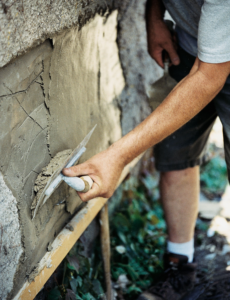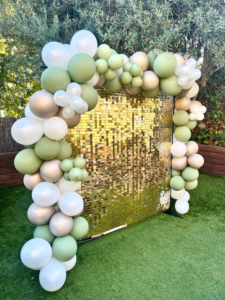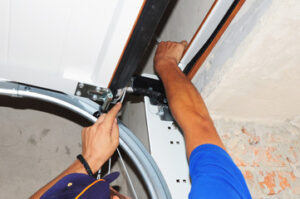Prime Cut Lawn and Landscaping is the art of changing the visual appearance of a property. It includes adding plants, adjusting the terrain and constructing structures.

A well-designed landscape adds value to your home and improves the quality of life. It can also increase a home’s resale value. It is important to consider the different seasons and how your landscape will change throughout the year.
Color is a key element in the landscape because it evokes emotions and draws attention to specific areas, bringing balance and harmony to the garden. It can also increase the resale value of your home. This is why it is so important to know how to use color strategically in the landscape.
Using the color wheel as a guide, designers may opt to stay within one color group or another, depending on whether the goal is to provide unity or contrast in the landscaping. Generally, it is best to avoid extreme variations in color. For example, choosing a dozen different flower colors can look “busy” to the eye. Your landscape designer may use block grouping of colors or create a “seasonal” scheme in which the color palette changes with the season.
Another way to use color is through tints and shades, which are lighter or darker versions of a particular color. A tint is created by adding white to a color, while a shade is produced by combining black with the same color. Tints and shades are a great way to add variety to your garden while maintaining the overall look of a monochromatic palette.
In addition to selecting the right color for your plantings, it is also important to consider the color of surrounding structures and architectural features, such as homes, fences, or garages. Choosing colors that complement rather than clash with these elements will help ensure your landscape design looks polished and professional.
Texture is an important aspect of landscape design because it adds visual interest and depth to the garden. It can also draw the eye to focal points or create a sense of movement. From the smooth river rocks to the spiky leaves of a cholla, there are countless textures that can be used in the landscape.
Homeowners can incorporate texture into their landscaping by mixing plants with different leaf shapes and sizes, using plants with varying textures, and using natural materials in their designs. Incorporating these textures into the landscape can also make it feel more organic and connected to nature.
Form
Landscape form refers to the three-dimensional qualities of your landscaping, including the flow between outdoor areas and the shapes of flowers, trees and hedges. It also includes the outlines of ponds, walkways and hardscaped structures like retaining walls and outdoor fireplaces. Form is a critical aspect of landscape design because it contributes to the overall aesthetic of your garden.
Line is a primary element of landscape form. It can guide the eye from one feature to another or, in the case of curved lines, it can draw the eye in a certain direction. Lines can be vertical, horizontal or diagonal and may also be angled. When used in landscape design, line can create a sense of movement or even weight, depending on how it is combined with other elements.
Form also incorporates the use of shapes to evoke emotion and set the tone of a landscape. Rectilinear forms feel structured and formal, circles can be soft and relaxed and triangles can be powerful. Irregular forms like those of drooping or weeping plants can also have a casual feel.
Adding variation in form prevents your landscape from looking flat and boring. Rounded forms can soften the harshness of a hardscaped structure or the angles of your home’s architecture and introduce visual balance to the space. Conversely, rigid forms can introduce a sense of order and structure to an otherwise chaotic landscape.
Shape is important because it adds dimension to the landscape, helping your design stand out and hold attention. Similarly, using a variety of textures helps to create interest and keep the viewer engaged. Texture is how a space feels to the touch and can be determined by how rough or smooth, light or heavy an element is.
Another way to add variety is through repetition. Using the same form, color or line in different patterns can create a sense of consistency throughout a design without overwhelming it. However, using repetition with care is important because too much repetition can result in monotony and confuse the eye. Ideally, you should use form, color and texture to create a unified design that is unique and personal to you.
Lines
One of the most important landscape elements, lines draw your eye through a garden. They can direct your gaze to a focal point, make a small garden feel larger and connect the indoors of your home with the outdoors. Lines can also create structure and formality or a natural ambience. The shapes and sizes of the various plant forms also influence their effects on a landscape’s lines.
The defining characteristics of lines are the ways in which they meet, contrast with and are positioned against each other or against the background. For example, a hardscape material line might be defined by the edge of a patio paver against an expanse of grass turf. Similarly, the edge of a path may be defined by a line of gravel or pavers against the ground plane of a turf lawn. A planting bed’s edge can also be a line. Other line types include the curves of a walk, the shape of a fence and the line created by a hedge. These line types can be real (actual) or perceived (implied by the way a plant is positioned or clustered).
Plants play a major role in creating the composition of your landscape’s lines, both by the way they grow together and how they are used. Clustering plants in groups can help to create a more formal design while spreading them out can give a more informal appearance. Lines can also be emphasized by repetition. The use of a single plant repeated in a rhythmic pattern along a line or the repetition of a specific form, like a square hedgerow, can add a sense of harmony and balance to a landscape.
The movement of the line through the landscape is another consideration. For example, a curved walk or bedline can guide your eyes up into the garden to accentuate tall trees and other structural features. In this case, the curved lines create movement and excitement while the vertical lines evoke a sense of structure and formality.
The lines you see in your landscape can have a very different impact depending on the time of day and season. The brighter, more intense sunlight of summer can make colors appear more saturated and vibrant, while the filtered light of winter can create a more subdued effect.
Lighting
Landscape lighting elevates the beauty of your home’s outdoor spaces and creates unparalleled ambiance. It also provides safety and security for your property after dark. By utilizing timers or smart devices, you can control the lights to suit your needs. The proper placement of lighting allows you to create various atmospheres, from romantic and cozy to festive and party-like.
Layering is the process of using different types of landscape lighting to achieve an optimal look and feel for your outdoor space. For example, you might use ambient lighting for general illumination, task lighting to illuminate pathways or other functions, and accent lighting to highlight features of your landscape. When planning your landscape lighting, consider how it will look from different perspectives — including those from inside your house or from guests enjoying your backyard.
The color of your lighting can impact the ambiance of your space. Warm colors like red, orange, and yellow create excitement and draw the eye, while cool colors like blue, green, and purple offer a calming effect. When choosing your lighting, choose fixtures that complement your landscape’s colors and design style.
Accent lighting is used to draw attention to specific areas or objects in your landscaping, such as fountains, trees, statues, and other outdoor art. It can be dimmed to create a more dramatic effect. Another technique used in landscape accent lighting is silhouetting, where a light is positioned to cast a shadow behind an object for a dramatic effect.
Path lighting is a type of landscape lighting that’s used to illuminate pathways for safety and convenience. This lighting can be installed in your yard’s concrete or pavers and is available in a variety of styles to match the look of your landscaping.
Your yard’s boundaries are defined by your landscaping and fences, but without lighting these boundaries can appear to close in on your home at night. Illuminated borders make your home and backyard feel bigger at night, and they’re also an effective deterrent against burglars who may be hiding in the darkness.








